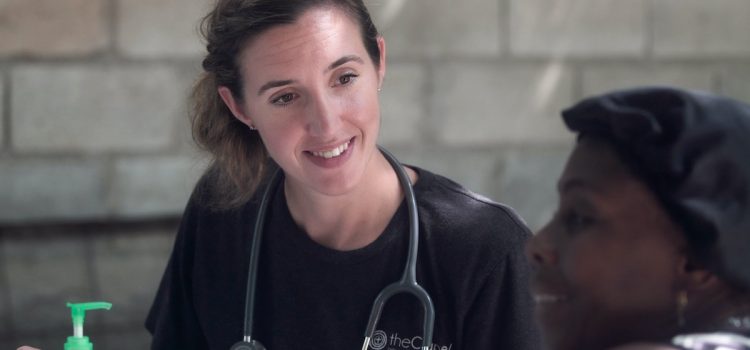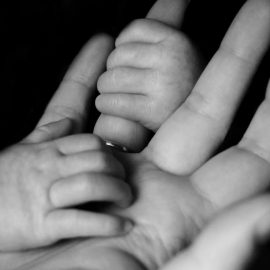

This article is an excerpt from the Shortform book guide to "The Boy Who Was Raised as a Dog" by Bruce D. Perry and Maia Szalavitz. Shortform has the world's best summaries and analyses of books you should be reading.
Like this article? Sign up for a free trial here.
What is the importance of patient history-taking? How can an understanding of a patient’s history inform treatment?
The importance of patient history-taking is that it can provide context for a patient’s symptoms vital for diagnosis, and it can offer insight into which treatments may work. A look at case studies in which patient history proved essential demonstrates how important this is.
Continue reading to learn why patient history is important, as demonstrated by these pediatric case studies.
Implementing the Neurosequential Model: Justin’s Case
We’ll explore an in-depth case to see the importance of patient history-taking and how the Neurosequential Model can be applied in the real world. One of the first cases treated with the Neurosequential Model was the case of Justin.
For the first 11 months of his life, Justin was raised by a loving grandmother, but her death left him in the care of her boyfriend Arthur, who had no child-rearing experience or knowledge. Arthur raised dogs, and because this was the only way he knew to care for another being, he raised Justin in a cage along with them. By age six, Justin couldn’t speak or walk.
The Importance of Patient History
Noticing his poor development, Arthur brought Justin to the hospital many times. Justin’s head and brain were significantly smaller than the average child his age, but the doctors never thought to ask Arthur about his living situation. They believed he had a birth defect that had caused permanent damage to his brain. They failed to consider the patient’s history, which, as explained earlier, is the vital first step in treating traumatized children.
When his psychiatrist met him, Justin—who had been brought to the hospital to be treated for pneumonia—was in a cage-like crib, where he would scream and throw food and feces at anyone who came in to see him.
(Shortform note: Patient history is vital not only to understanding what triggered the patient’s current status, but also to preventing any harm from befalling the patient as a result of the therapy. For example, failing to learn a patient’s history could lead a doctor to prescribe a medication the patient is allergic to, or to prescribe a treatment plan that the patient has already tried and found ineffective in the past.)
The Importance of a Safe Environment
The first thing the psychiatrist did was create an environment in which Justin felt safe. He had him moved to a private hospital room, reduced the number of staff who saw him to increase the consistency among his carers, and began treatments like speech and physical therapy. Justin showed rapid improvement—he stopped throwing things and began smiling and responding to verbal communication within days. Shortly after that, he began walking and learned basic skills like using silverware and dressing himself. His mind seemed to be soaking up these new experiences like it was starving.
This showed the importance of repeated and patterned stimulation of the brain in creating neural changes, but this case highlighted how necessary it was that such stimulation take place in an environment that felt both safe and predictable to the patient. This, too, formed a fundamental piece of this therapeutic model.
(Shortform note: Since so much of children’s time is spent in school, teachers may have a positive effect on their development by creating safe, predictable environments that meet their students’ needs—particularly those affected by trauma. Experts suggest that teachers can do this by collaborating with their students in establishing the classroom environment. Students feel safer when they can have a say in the class’s rules and routines, which, as this model suggests, makes it easier for them to function and heal.)
Trusting Children as Patients and Carers
This model involves placing a great deal of trust in children. As explained earlier, understanding a patient’s history of trauma and development is essential to their treatment. In this case, the psychiatrist was able to gain a workable understanding of the patient’s history based on talking with their parents or caregivers. But sometimes, parents’ stories differ from the ones their children tell. It’s often our first instinct to believe parents and other adults over children when it comes to misbehavior. However, experts recommend always listening to the child to truly understand their experiences.
Listening to the Child: James’s Case
We will also look at a case of a six-year-old boy named James with severe medical and behavioral problems, including running away from home, jumping out of moving cars, and an attempted suicide via drug overdose. He was initially diagnosed with reactive attachment disorder (RAD), but there was some doubt about this, due to the boy’s ability to form close personal bonds.
James told the medical staff in confidence that his mom was lying and hurting him, and he asked them to call the police. The psychiatrist realized the issue was James’s mother—she had Munchausen by proxy syndrome and was harming him to get attention for herself. Had the psychiatrist and the medical staff not listened to James, his mother may have ultimately killed him.
| Parents Who Hide Their Abuse From Medical Staff While it’s essential for medical staff to listen to children and be on the lookout for abuse, they may not always have the opportunity to do so; some abusive parents will refrain from seeking medical treatment for their children because they don’t want to be caught. For example, in A Child Called It, Dave Pelzer explains how his mother brutally abused him, and even when she inflicted potentially life-threatening injuries, she never took him to the hospital. Similarly, in If You Tell, Gregg Olsen describes how convicted murderer Shelly Knotek subjected her children to years of violence and cruelty—and, like Dave’s mother, she refrained from taking them to the hospital for serious injuries because she knew she wouldn’t be able to explain the many other injuries on their bodies. In these cases, the adults who had the opportunity to report this vicious child abuse were not medical staff but rather school staff who saw the children frequently. Knotek’s daughters often wore long tights and sleeves to cover the bruises on their bodies, hiding their injuries from people at school. However, in Pelzer’s case, school staff were aware of the ever-present injuries on Dave’s body, but they didn’t report them to the police until Dave admitted they came from his mother’s abuse (and due to the laws at the time, the school staff were risking their jobs by reporting the abuse). Today, most states legally require teachers and other school staff to immediately report any suspected child abuse or neglect to authorities. To help prevent abuse, school staff should be on the lookout for signs such as the following: unexplained bruises or other injuries, breathing problems, aggression or behavioral changes, signs of self-harm, hygiene problems, or social withdrawal. Teachers may also note signs in the way caregivers interact with their child, such as belittling, isolating, or harshly disciplining the child. |

———End of Preview———
Like what you just read? Read the rest of the world's best book summary and analysis of Bruce D. Perry and Maia Szalavitz's "The Boy Who Was Raised as a Dog" at Shortform.
Here's what you'll find in our full The Boy Who Was Raised as a Dog summary:
- How trauma impacts the developing brains of children
- Case studies of child abuse and neglect, as told by a child psychiatrist
- An explanation of the Neurosequential Model of Therapeutics






